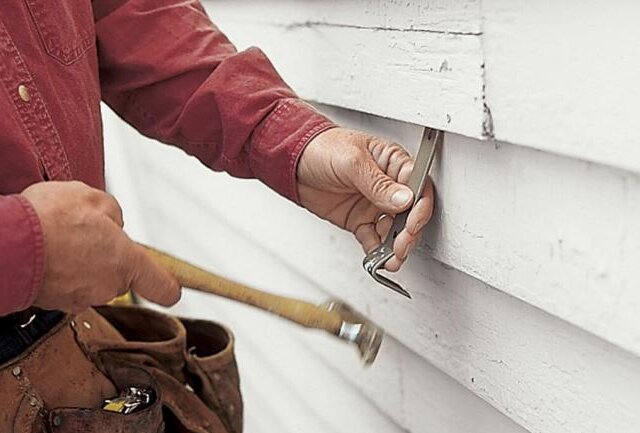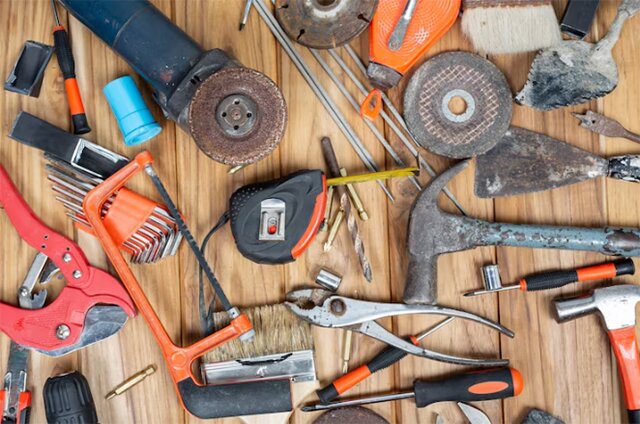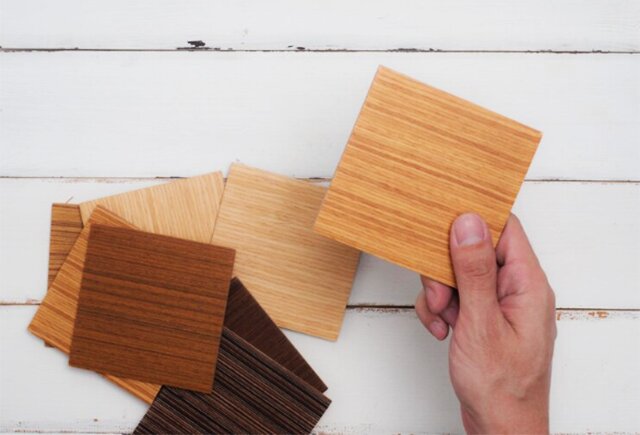If you’re looking to take on a home improvement project and have chosen to repair your composite siding, you’ve come to the right place! With some basic tips and expert advice, this guide will walk you through the steps for a successful composite siding repair. From selecting the best materials to necessary preparation, we’ll cover everything you need to know about repairing your composite siding. So let’s get started!
Disclaimer: This article is intended to provide helpful advice and information about composite siding repair. However, it should not be taken as professional advice or an expert opinion. For assistance with a particular issue or project, it is advisable to seek the expertise of a qualified contractor or specialist. Advance Roofing LLC provides high quality roofing solutions in the Spokane, WA area. Our experienced team can meet all of your roofing needs. So don’t hesitate to contact us today if you have any questions or need guidance on your composite siding repair project!
What is Composite Siding?
Composite siding is a popular option for homeowners looking for a durable and attractive alternative to wood or vinyl siding. Made from a combination of materials such as wood pulp, cement, and polymers, composite siding offers a wide variety of benefits, including superior durability, ease of maintenance, and a wide range of colors and styles to choose from. However, like any type of siding, composite siding may need repairs at some point to ensure it continues to look and perform its best. In this article, we’ll share expert tips for composite siding repair to help you achieve a successful project that enhances your home’s curb appeal and protects it from environmental conditions for years to come.
Benefits of Composite Siding
When planning a repair or replacement project for their home’s exterior, homeowners want a siding material that is durable, affordable, and easy to maintain. Composite siding ticks all these boxes and more, making it a popular choice for homeowners looking for a cost-effective and practical solution.
One of the primary benefits of composite siding is its durability. Made from a blend of various materials, composite siding is highly resistant to weathering, insects, and rot. This makes it an ideal choice for those living in areas with harsh environmental conditions that could cause damage to their home’s exterior over time.
Another advantage of composite siding is its affordability. Compared to other types of siding material, composite siding is relatively inexpensive, making it an excellent choice for budget-conscious homeowners looking for a cost-effective solution that will not break the bank.
Additionally, composite siding is easy to maintain. Unlike wood siding, composite siding doesn’t require regular painting or staining, which can save homeowners time and money over the long term. A simple cleaning with mild soap and water is usually sufficient to keep it looking great for years to come.
Composite siding also offers the benefit of customization. With a wide range of colors, styles, and shapes available, homeowners can create a unique look for their home’s exterior that suits their personal style and enhances their property’s curb appeal.
Identifying the Need for Repair or Replacement

Siding is a crucial component of any home’s exterior, serving as both aesthetic and protective elements. Over time, however, siding may start to show signs of wear and tear, and identifying the need for repair or replacement becomes essential. In this section, we’ll explore some tell-tale signs that your siding may require attention from a professional contractor. By recognizing these signs early on, you can prevent costly repairs down the road and ensure your home stays safe and protected.
Common Signs of Damage
Composite siding can be a popular choice for homeowners due to its superior durability, ease of maintenance, and wide variety of colors. However, like any type of siding material, composite siding can experience damage over time. Here are the common signs of damage that you should be aware of and how to address them:
Broken or cracked siding: This can occur due to environmental conditions or improper installation. If you notice any broken or cracked siding, it’s important to call a professional siding contractor to assess the damage. They may recommend replacing the damaged panels to prevent further damage.
Bubbles, blisters, or peeling paint: This can occur due to moisture seeping into the siding material. If you notice any bubbles, blisters, or peeling paint, it’s important to address the issue quickly to prevent further water damage. A professional siding contractor can assess the extent of the damage and recommend the best course of action, which may involve replacing the damaged panels.
Missing siding or siding that is hanging loosely: This can occur due to severe weather conditions or improper installation. If you notice any missing or loose siding, it’s important to have a professional siding contractor assess the damage and repair it quickly. Leaving missing or loose siding untreated can result in further damage and costly repairs down the line.
Divots, dents, and dips: This can occur due to impact from heavy objects or severe weather conditions. If you notice any divots, dents, or dips in your composite siding, it’s important to have a professional siding contractor assess the damage and recommend the best course of action. They may suggest replacing the damaged panels or repairing them if possible.
Water damage and wood rot: Composite siding is designed to be resistant to moisture, but prolonged exposure to water can cause damage over time. Signs of water damage and wood rot include soft spots, discoloration, mold growth, and a foul odor. If you suspect that your composite siding has water damage or wood rot, it’s important to have a professional siding contractor assess the damage and recommend the best course of action, which may involve replacing the damaged panels and addressing the source of the water damage.
Choosing the Right Materials and Contractor
Choosing the right materials and contractor is crucial in ensuring a successful composite siding repair project. The quality of materials used and the expertise of the contractor can greatly affect the outcome of the project and can ultimately impact the curb appeal and value of your home. In this article, we’ll discuss expert tips on how to choose the right materials and contractor for your composite siding repair project.
Popular Materials for Composite Siding Repairs and Replacements

When it comes to choosing materials for composite siding repairs and replacements, there are several popular options available. Here are some of the most common materials used for repairing or replacing composite siding.
- Vinyl siding is one of the most popular choices for repairs and replacements due to its affordability and ease of maintenance. It is also known for its durability and resistance to weathering, which makes it a good choice for areas with harsh environmental conditions.
- Aluminum siding is another popular choice for composite siding repairs and replacements. It is lightweight, durable, and resists corrosion and rust. It also provides good insulation, which can help reduce energy bills over time.
- Fiber-cement siding is a composite material that is made up of cement, sand, and other fibers. It is a popular choice for those looking for a high quality, durable material that is resistant to weathering, insects, and fire. It is also a good choice for those looking for a low-maintenance siding option.
- Real wood siding has a natural, rustic look that many homeowners find appealing. However, it requires regular maintenance to prevent rot, insect damage, and weathering. In recent years, engineered wood and composite siding have become popular alternatives to real wood siding. They offer the same appearance as real wood, but without the need for as much maintenance.
- Engineered wood and composite siding are made from a combination of wood fibers and a binding agent that is designed to resist moisture, insects, and weathering. They are a good choice for those looking for a low-maintenance siding option that still looks like real wood.
Ensuring Proper Installation and Ease of Maintenance with a Professional Siding Contractor
When it comes to composite siding repairs or replacements, ensuring proper installation and ease of maintenance are essential. Choosing a professional siding contractor with experience in siding installation can help ensure that the job is done correctly, reducing the likelihood of expensive repairs down the line.
Using high-quality composite siding materials is also crucial. These materials are designed to resist harsh environmental conditions, insects, and fire while also providing optimal insulation. A professional contractor with expertise in installing composite siding can ensure that the material is installed using the proper techniques to maximize its durability and longevity.
Proper maintenance is also an important factor in extending the lifespan of composite siding. Regular cleaning, re-caulking, and repainting can help maintain the appearance and function of the siding while preventing damage from occurring over time. These tasks can be performed by a homeowner, but for best results, it is recommended to hire a professional contractor for regular maintenance to ensure that the siding remains in good condition and functional.
Some potential maintenance requirements and costs may include power washing to remove dirt and grime, caulking to seal gaps around windows and doors, and repainting to protect against fading and peeling. Regular maintenance may involve some costs and time, but it is worth the investment to ensure that your composite siding remains in optimal condition.
Cost Considerations for Hiring a Professional Siding Contractor
Cost is a significant factor when considering hiring a professional siding contractor for any composite siding repair project. The price of the repair will depend on several factors, including the size of the area being repaired and the type of materials being utilized. Different materials come with different price tags, so it is crucial to keep this in mind when researching contractors.
When planning for a siding repair, it’s important to factor in additional features like insulation or decorative accents, which may add to the overall cost. These add-ons can increase the cost of the repair project, so it is important to discuss your options and budget constraints with the contractor.
When researching for a professional siding contractor, it is crucial to find a trustworthy company that can provide an accurate estimate based on your specific needs and budget constraints. Look for a company that offers transparent pricing and is willing to work with you to find a solution that fits your needs and budget.
It is important to note that while the cost of hiring a professional siding contractor for composite siding repair may seem high, it is often worth the investment. A professional contractor will have the necessary equipment, experience, and expertise to ensure that the repair is done correctly and will last for many years to come. By investing in a high quality repair, you can save money in the long run by avoiding costly repairs and replacements down the road.
Selecting the Right Type of Composite Siding Material

Selecting the right type of composite siding material for your home is an important decision that will impact both the appearance and durability of your property. With so many options available, it can be challenging to determine which type of composite siding material is the best fit for your home. To help you make an informed decision, we’ve outlined some key factors to consider when selecting composite siding material.
Types of Composite Siding Available on the Market Today
Composite siding is a popular choice for homeowners looking to revamp the exterior of their homes. It includes a variety of materials, each with its unique features and benefits. Here are the most common types of composite siding available on the market today.
Fiber cement siding is a durable and long-lasting option made of cement, sand, and cellulose fibers. It is resistant to termites, fire, and rot, making it a popular choice in areas with harsh environmental conditions. Fiber cement siding is also available in a wide range of colors and textures, mimicking the look of real wood, stone, or stucco. On the downside, it is heavier and more challenging to install than other types of siding, which may require the help of a professional contractor.
Insulated vinyl siding is an ideal choice for homeowners looking for a low-maintenance and energy-efficient option. It is made of PVC, which makes it lightweight and easy to install. Insulated vinyl siding comes with a layer of foam insulation, which helps reduce energy costs and sound transmission. It is also available in a variety of colors and styles, allowing homeowners to personalize the exterior of their homes.
Aluminum siding is a durable and affordable option made of recycled aluminum. It is resistant to fire, insects, and water damage. Aluminum siding is also lightweight, making it easy to install. It is available in various styles and finishes, including smooth, textured, and embossed. On the downside, it may dent or scratch easily, which may be costly to repair.
Batten siding is a vertical siding option with narrow strips of wood or composite material applied to the exterior of a home. It provides a unique and rustic look. Batten siding is available in a variety of colors and textures and can be customized to fit the architectural style of a home. On the downside, it requires regular maintenance, including painting and staining, to prevent water damage and rot.
Siding panels are a popular option for modern homes. They are made of various materials, including composite materials, metal, and fiber cement. Siding panels are available in a range of colors and textures, and they can mimic the look of wood, stone, or concrete. Siding panels are also an excellent option for those looking for a budget friendly and low-maintenance option.
Preparing Your Home for Repairs or Replacement with Composite Siding Material

Before you begin any repairs or replacement with composite siding material, it is important to properly prepare your home to ensure a successful and long-lasting project. The following are expert tips to help you prepare your home for composite siding repair or replacement.
- Assess Your Current Siding. The first step to preparing your home for composite siding repair or replacement is to assess the current state of your home’s siding. Walk around the exterior of your home and examine all the areas where siding is present. This inspection will help you identify any areas where repairs or replacement are necessary.
- Inspect for Damage. Once you’ve identified any problem areas, it is important to inspect them more closely for damage or wear and tear. Look for cracks, holes, or other signs of damage, and note their location. Additionally, inspect the caulking around windows, doors, and other protrusions to ensure they are intact and not allowing moisture to seep into the siding underneath.
- Clean and Prepare the Surface. After identifying the areas in need of repair or replacement, it is important to clean and prepare the surface before beginning any work. This may involve removing any old paint or debris from the surface to ensure a clean and smooth surface for the new composite siding. Use a stiff brush and a mild cleanser or pressure washer to clean the surface.
- Remove Damaged Panels. If any of the siding panels are damaged or worn beyond repair, it is important to remove them before installing new composite siding. Remember to remove any underlying nails or screws before proceeding with the repair or replacement.
- Assess Your Weather Barrier. Composite siding repair or replacement can be rendered ineffective if your home’s weather barrier is compromised. Therefore, it is important to assess the condition of your current weather barrier, such as Tyvek or felt paper, to ensure that it is intact and in good condition to protect against moisture and other outdoor elements.
Conclusion
In conclusion, with proper planning and execution, composite siding repair can be a relatively simple and cost-effective way to freshen up your home’s exterior and improve its curb appeal. By assessing the current state of your siding, inspecting for damage, cleaning and preparing the surface, removing damaged panels, and assessing your weather barrier, you can ensure a successful siding project that will not only enhance the beauty of your home but also potentially reduce energy bills and costly repairs in the future. Don’t hesitate to consult with an experienced contractor or professional siding contractor to get the job done right.



 509-201-4190
509-201-4190
